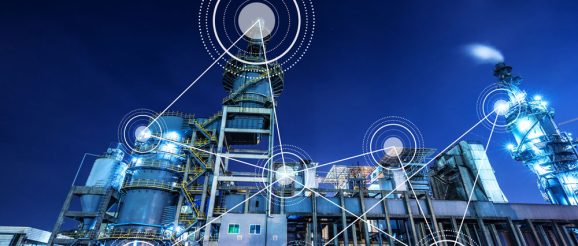Navigating the Fourth Industrial Revolution: Embracing Change and Harnessing Innovation | E-SPIN Group

The leap in productivity brought about by the industrial revolution has been transformative for humanity. From the advent of steam power marking the first revolution to the current landscape dominated by the fourth industrial revolution, the journey of technological advancement has been awe-inspiring. Today, at the forefront of this revolution, lies the amalgamation of emerging technologies driven by the internet, chiefly among them being cloud computing. This technological marvel has paved the way for the utilization of big data, machine learning, artificial intelligence (AI), and robotics, propelling industries and societies into uncharted territories of innovation and efficiency. The scope of robotics automation, a significant facet of this revolution, transcends the traditional notion of tangible robots. While physical robots are undoubtedly a part of this revolution, equally impactful are software robots and automation mechanisms. These include chatbots, generative AI, and various forms of automated processes that streamline tasks and operations across industries. Each wave of transformation inherent in these industrial revolutions presents unparalleled opportunities for those who grasp its implications and are willing to adapt. Understanding the true essence of these changes and envisioning their potential consequences for the future is paramount. Those who possess the foresight to embrace change and actively participate in shaping it stand to benefit immensely from the opportunities it presents. Conversely, those who remain indifferent or obstinately resistant to change risk facing extinction in the rapidly evolving landscape of technological progress. Believing oneself to be impervious or immune to the winds of change is a fallacy that can lead to stagnation and eventual obsolescence. The relentless march of innovation waits for no one, and those who fail to acknowledge its significance may find themselves left behind in the annals of history. The first industrial revolution, characterized by the harnessing of steam power, marked a pivotal moment in human history. It facilitated unprecedented advancements in manufacturing, transportation, and communication, laying the groundwork for subsequent waves of innovation. The second industrial revolution, propelled by electricity and mass production, further accelerated societal progress, ushering in an era of industrialization and urbanization. The third industrial revolution, often referred to as the digital revolution, saw the emergence of computers, telecommunications, and automation. This era witnessed the proliferation of information technology, connecting the world in ways previously unimaginable. However, it is the fourth industrial revolution that holds the promise of transforming every aspect of human existence fundamentally. At the heart of the fourth industrial revolution lies the convergence of physical, digital, and biological realms, blurring the lines between the physical and virtual worlds. Enabled by breakthroughs in fields such as AI, robotics, nanotechnology, biotechnology, and quantum computing, this revolution has the potential to reshape industries, redefine societal norms, and even alter the very essence of what it means to be human. Cloud computing, a cornerstone of this revolution, provides unprecedented scalability, flexibility, and accessibility to computational resources. It serves as the backbone for a myriad of applications ranging from data analytics to AI-driven decision-making processes. The vast amount of data generated and stored in the cloud serves as fuel for machine learning algorithms, enabling organizations to derive actionable insights and drive innovation. Machine learning, a subset of AI, empowers systems to learn from data and improve over time without explicit programming. Its applications span diverse domains, including natural language processing, image recognition, predictive analytics, and autonomous vehicles. As machine learning algorithms become increasingly sophisticated, they hold the potential to revolutionize industries ranging from healthcare to finance, agriculture to manufacturing. Artificial intelligence, often dubbed as the pinnacle of technological achievement, encompasses a broad spectrum of capabilities, from basic rule-based systems to advanced neural networks. AI-driven solutions are poised to transform virtually every aspect of human endeavor, from optimizing supply chains to personalizing healthcare, from enhancing cybersecurity to augmenting creativity. Robotics, another cornerstone of the fourth industrial revolution, encompasses a wide array of technologies, from industrial robots used in manufacturing to service robots deployed in healthcare and hospitality. Advances in robotics have not only automated repetitive tasks but also enabled the creation of collaborative robots (cobots) capable of working alongside humans in dynamic environments. However, the impact of robotics extends beyond physical machines to encompass software robots and automation tools. Chatbots, for instance, leverage natural language processing algorithms to interact with users and provide assistance or information. Generative AI, on the other hand, has the ability to create content, ranging from text to images and music, with minimal human intervention. As the fourth industrial revolution unfolds, it presents both opportunities and challenges for individuals, organizations, and societies at large. Those who embrace the wave of change and leverage emerging technologies to their advantage stand to thrive in the digital age. However, for those who remain complacent or resistant to adaptation, the consequences could be dire. In the end, the fourth industrial revolution represents a paradigm shift of unprecedented magnitude, driven by the convergence of emerging technologies and fueled by the power of the internet. Cloud computing, big data, machine learning, artificial intelligence, and robotics are among the key enablers of this revolution, offering boundless opportunities for innovation and progress. To navigate this transformative era successfully, individuals and organizations must embrace change, cultivate a culture of innovation, and harness the power of technology to shape a brighter future for generations to come.
